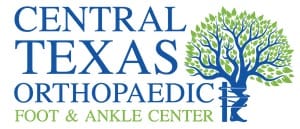Common Diagnoses:
Foot Sprain
Foot Sprain Overview
A foot sprain is damage to ligaments within the foot. The term “sprain” refers to overstretching or tearing of ligaments — the strong, fibrous bands of tissue that hold the bones together within the joints. Foot sprains are usually sports or dance injuries. Any sort of running movement that involves sudden stops, starts, and twisting can lead to a foot sprain. Suddenly getting the foot caught while walking or running can wrench the ligaments and cause a sprain.
Foot Sprain Symptoms
Symptoms of a foot sprain include:
- Pain and tenderness near the arch of the foot. This can be felt on the bottom, top, or sides of the foot.
- Bruising and swelling of the foot
- Pain when walking or during activity
- Not being able to put weight on your foot. This most often occurs with more severe injuries.
Foot Sprain Diagnosis
The diagnosis is made through physical examination and imaging such as X-ray, CT scan, or MRI.
Foot Sprain Treatment
Treatment is usually conservative and involves rest to allow healing; nonsteroidal anti-inflammatory drugs (NSAIDs) for pain; elevating the foot to improve circulation; wrapping the foot with an Ace bandage or wearing a special boot for support.
Rest, ice, elevation and compression (RICE)
Your physician may recommendtreatments to reduce the swelling and prevent further injury. Your physician may recommend resting the foot for a few weeks for minor/moderate injuries, and up to three to four months for severe injuries. Details include:
Rest: Rest the foot and prevent it from bearing weight.
Ice: Apply ice to the area of injury.
Compression: Place a dressing and wrap on the foot.
Elevation: Elevate the foot above the level of your heart to reduce swelling.
Immobilization
Your physician may also recommend immobilizing the foot in a splint or boot. This protects the foot from further injury, either from movement or from further outside trauma. Your physician may recommend using crutches while the foot is immobilized to prevent weight-bearing.
Pain medications
Your physician may recommend a variety of pain medications to help control the pain. Mild pain can usually be managed with over-the-counter pain medications such as acetaminophen (Tylenol), or NSAIDs such as ibuprofen (Advil, Motrin) or naproxen (Aleve). More severe pain may require a course of prescription medications such as tramadol (Ultram).
Surgery
If your physician says you have a severe foot sprain, he or she may recommend that you have a foot and ankle surgeon evaluate you and determine if you need surgery. Surgical treatment is usually reserved for Grade III sprains, or for any sprains that are associated with fractures of the nearby bones. Surgery may involve positioning the bones back into their proper position, fusing damaged bones together, and/or using plates or screws to hold bones in place. Following surgery, you will need a period of physical therapy and rehabilitation to help in the recovery process.
